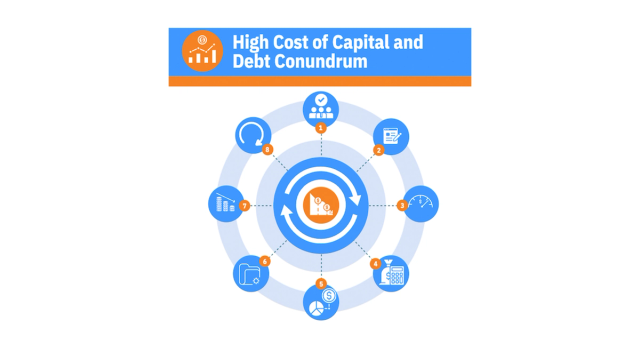How Regions Can Lead the Charge in the Global Clean Energy Revolution
The global push for clean energy is at a crossroads. While the urgency of transitioning to clean energy has never been clearer, the financial and regulatory barriers in many regions threaten to slow down progress. So how do we move forward? A new report, “Financing Pathways for the Energy Transition: A Regional Approach," developed by the Columbia Center on Sustainable Investment (CCSI) in collaboration with the Council of Engineers for the Energy Transition (CEET), shines a light on potential solutions to these barriers from a regional perspective.
This joint effort, supported by the Environmental Defense Fund and the Global Energy Interconnection Development and Cooperation Organization, recognizes that the challenges in financing the energy transition differ widely between regions. Tailoring financial strategies to local contexts—whether in Africa, Asia-Pacific, Latin America and the Caribbean, or Europe—is crucial for overcoming the roadblocks that hinder clean energy progress.
Why a Regional Approach?
The energy transition is not a one-size-fits-all challenge. From energy poverty in Africa to regulatory hurdles in Latin America and fossil fuel dependencies in Asia, each region faces unique circumstances that require tailored solutions. What the report makes clear is that regional cooperation and cross-border investments are key to unlocking the potential of clean energy across the globe.
For example, Africa boasts vast untapped renewable resources like solar and wind power, yet over 75% of the global population lacking access to electricity resides on the continent. Meanwhile, APAC is one of the fastest-growing energy markets, but remains highly reliant on coal. These challenges, combined with the complex regulatory environments and high financing costs, require a more nuanced approach to energy transition planning.
Breaking Down the Barriers
The report highlights three major obstacles that hinder progress in regions with developing economies:
High Cost of Capital
In Emerging Markets and Developing Economies (EMDEs), financing clean energy projects can be extremely expensive. Sovereign credit ratings, currency volatility, and the debt burdens these countries carry often result in borrowing costs that are dramatically higher than in advanced economies. Countries in these regions typically face interest rates that are 700 to 1,500 basis points higher than those in the U.S. or Europe. This makes renewable energy projects harder to finance, and the high costs of borrowing translate into higher energy tariffs, exacerbating energy poverty.
The Debt Conundrum
Many EMDEs are caught in a cycle where the debt conditions are awfully detrimental and unsustainable, limiting their ability to invest in clean energy infrastructure. This "rat's trap" of unsustainable debt makes it challenging for these nations to break free and invest in the long-term projects needed to drive their energy transitions.
Regulatory Barriers
Outdated regulations and slow permitting processes are widespread, causing delays and uncertainty for renewable energy projects. In some regions, it can take over a decade just to secure permits for a clean energy project. This not only discourages private investors but also drives up the overall cost of project implementation.
Opportunities on the Horizon
While the challenges are significant, the opportunities are equally vast. Each region has the potential to leapfrog into a clean energy future by harnessing its strengths:
- Africa can capitalize on its immense solar and wind resources, while regional initiatives like the African Continental Free Trade Area (AfCFTA) can streamline trade in energy technologies across borders.
- Asia-Pacific is home to some of the fastest-growing energy markets, with significant potential for solar and wind energy, especially in countries like Vietnam, Indonesia, and India.
- Latin America offers a diverse energy mix, including hydropower and biofuels, while its wealth of critical minerals for green technologies, like lithium, positions it as a key player in the global clean energy economy.
- Europe has advanced regulatory frameworks, such as the European Green Deal and the REPowerEU Plan, but faces challenges due to tight monetary conditions and competing public budget demands.
Collaborating for Solutions
The collaboration between the CEET and CCSI provides a comprehensive analysis of these challenges and highlights potential pathways forward. One key solution is the development of innovative financing mechanisms. By leveraging tools such as blended finance, green bonds, and innovative FX hedging mechanisms, countries can mobilize the funds needed to accelerate their transitions. These mechanisms can lower the risks for private investors, making clean energy projects more attractive and financially viable.
Another important aspect is regional cooperation. By developing integrated energy grids and cross-border energy markets, countries can share resources, reduce costs, and improve energy security. This kind of collaboration not only improves resilience but also enhances efficiency, driving down costs for renewable projects and making them more competitive with fossil fuels.
Looking Ahead
The path to a clean energy future is complex, but it is not insurmountable. As highlighted by the CEET-CCSI collaboration, focusing on regional strategies and fostering public-private partnerships can help address the financing gaps that hold back the energy transition. The key is recognizing that no single solution will work everywhere—each region must harness its own strengths while overcoming its unique barriers.
The time for bold, collective action is now. By unlocking regional solutions and innovative financing pathways, we can turn the energy transition from a challenge into an opportunity for sustainable growth.
For more information, reach out to Ana M. Camelo Vega at ac5545@columbia.edu
